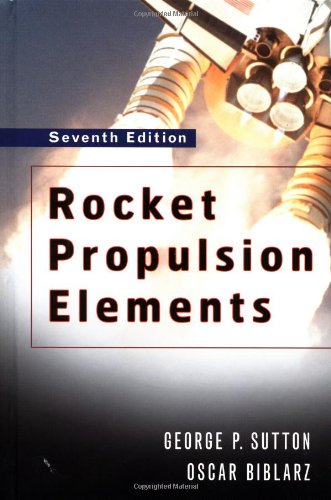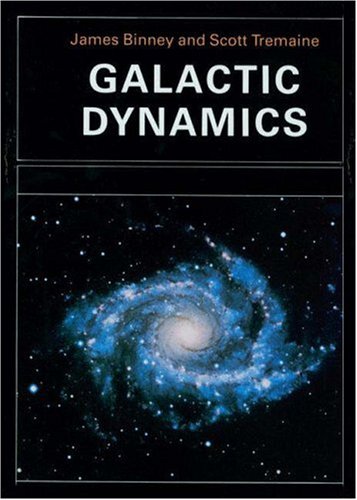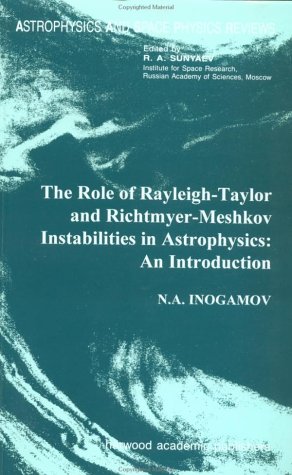George P. Sutton, Oscar Biblarz9780471326427, 0-471-32642-9
Table of contents :
Front Matter……Page 2
Preface……Page 4
Table of Contents……Page 0
Table of Contents……Page 9
1. Classification……Page 15
1.1. Duct Jet Propulsion……Page 16
1.2. Rocket Propulsion……Page 18
1.3. Applications of Rocket Propulsion……Page 29
References……Page 39
2.1. Definitions……Page 41
2.2. Thrust……Page 46
2.3. Exhaust Velocity……Page 48
2.4. Energy and Efficiencies……Page 50
2.5. Typical Performance Values……Page 53
Problems……Page 55
Symbols……Page 57
References……Page 58
3. Nozzle Theory and Thermodynamic Relations……Page 59
3.1. Ideal Rocket……Page 60
3.2. Summary of Thermodynamic Relations……Page 61
3.3. Isentropic Flow through Nozzles……Page 66
3.4. Nozzle Configurations……Page 89
3.5. Real Nozzles……Page 99
3.6. Four Performance Parameters……Page 106
3.7. Nozzle Alignment……Page 108
3.8. Variable Thrust……Page 110
Problems……Page 111
Symbols……Page 113
References……Page 114
4.1. Gravity-Free Drag-Free Space Flight……Page 116
4.2. Forces Acting on a Vehicle in the Atmosphere……Page 120
4.3. Basic Relations of Motion……Page 122
4.4. Effect of Propulsion System on Vehicle Performance……Page 129
4.5. Space Flight……Page 131
4.6. Flight Maneuvers……Page 146
4.7. Flight Vehicles……Page 153
4.8. Military Missiles……Page 163
4.9. Aerodynamic Effect of Exhaust Plumes……Page 166
4.10. Flight Stability……Page 167
Problems……Page 168
Symbols……Page 171
References……Page 173
5. Chemical Rocket Propellant Performance Analysis……Page 174
5.1. Background and Fundamentals……Page 175
5.2. Analysis of Chamber or Motor Case Conditions……Page 183
5.3. Analysis of Nozzle Expansion Processes……Page 186
5.4. Computer Analysis……Page 193
5.5. Results of Thermochemical Calculations……Page 194
Problems……Page 207
Symbols……Page 208
References……Page 209
6. Liquid Propellant Rocket Engine Fundamentals……Page 211
6.1. Propellants……Page 215
6.2. Propellant Feed Systems……Page 217
6.3. Gas Pressure Feed Systems……Page 219
6.4. Propellant Tanks……Page 225
6.5. Tank Pressurization……Page 232
6.6. Turbopump Feed Systems and Engine Cycles……Page 235
6.7. Flow and Pressure Balance……Page 241
6.8. Rocket Engines for Maneuvering, Orbit Adjustments, or Attitude Control……Page 242
6.9. Valves and Pipe Lines……Page 246
6.10. Engine Support Structure……Page 249
Problems……Page 250
Symbols……Page 252
References……Page 253
7. Liquid Propellants……Page 255
7.1. Propellant Properties……Page 256
7.2. Liquid Oxidizers……Page 265
7.3. Liquid Fuels……Page 269
7.4. Liquid Monopropellants……Page 273
7.5. Gelled Propellants……Page 275
7.6. Gaseous Propellants……Page 277
7.7. Safety and Environmental Concerns……Page 278
Problems……Page 279
References……Page 280
8. Thrust Chambers……Page 282
8.1. Injectors……Page 285
8.2. Combustion Chamber and Nozzle……Page 296
8.3. Heat Transfer Analysis……Page 322
8.4. Starting and Ignition……Page 334
8.5. Variable Thrust……Page 337
8.6. Sample Thrust Chamber Design Analysis……Page 338
Problems……Page 349
Symbols……Page 352
References……Page 354
9. Combustion of Liquid Propellants……Page 356
9.1. Combustion Process……Page 357
9.2. Analysis and Simulation……Page 360
9.3. Combustion Instability……Page 362
References……Page 374
10.1. Turbopumps……Page 376
10.2. Performance of Complete or Multiple Rocket Propulsion Systems……Page 398
10.3. Propellant Budget……Page 401
10.4. Engine Design……Page 403
10.5. Engine Controls……Page 410
10.6. Engine System Calibration……Page 419
10.7. System Integration and Engine Optimization……Page 425
Symbols……Page 427
References……Page 429
11. Solid Propellant Rocket Fundamentals……Page 431
11.1. Propellant Burning Rate……Page 433
11.2. Basic Performance Relations……Page 451
11.3. Propellant Grain and Grain Configuration……Page 458
11.4. Propellant Grain Stress and Strain……Page 467
11.5. Attitude Control and Side Maneuvers with Solid Propellant Rocket Motors……Page 480
Problems……Page 481
Symbols……Page 484
References……Page 485
12.1. Classification……Page 488
12.2. Propellant Characteristics……Page 494
12.3. Hazards……Page 501
12.4. Propellant Ingredients……Page 508
12.5. Other Propellant Categories……Page 519
12.6. Liners, Insulators, and Inhibitors……Page 523
12.7. Propellant Processing and Manufacture……Page 525
Problems……Page 529
References……Page 532
13.1. Physical and Chemical Processes……Page 534
13.2. Ignition Process……Page 538
13.3. Extinction or Thrust Termination……Page 540
13.4. Combustion Instability……Page 542
References……Page 551
14.1. Motor Case……Page 554
14.2. Nozzle……Page 564
14.3. Igniter Hardware……Page 577
14.4. Rocket Motor Design Approach……Page 582
Problems……Page 589
References……Page 591
15. Hybrid Propellant Rockets……Page 593
15.1. Applications and Propellants……Page 594
15.2. Performance Analysis and Grain Configuration……Page 599
15.3. Design Example……Page 607
15.4. Combustion Instability……Page 613
Symbols……Page 618
References……Page 620
16. Thrust Vector Control……Page 622
16.1. TVC Mechanisms with a Single Nozzle……Page 623
16.2. TVC with Multiple Thrust Chambers or Nozzles……Page 634
16.4. Integration with Vehicle……Page 635
References……Page 637
17. Selection of Rocket Propulsion Systems……Page 638
17.1. Selection Process……Page 639
17.2. Criteria for Selection……Page 644
17.3. Interfaces……Page 648
References……Page 652
18. Rocket Exhaust Plumes……Page 653
18.1 Plume Appearance and Flow Behavior……Page 655
18.2. Plume Effects……Page 666
18.3. Analysis and Mathematical Simulation……Page 671
References……Page 672
19. Electric Propulsion……Page 674
19.1. Ideal Flight Performance……Page 680
19.2. Electrothermal Thrusters……Page 684
19.3. Non-Thermal Electric Thrusters……Page 691
19.4. Optimum Flight Performance……Page 710
19.5. Mission Applications……Page 714
19.6. Electric Space-Power Supplies and Power-Conditioning Systems……Page 715
Problems……Page 720
Symbols……Page 721
References……Page 723
20.1. Types of Tests……Page 725
20.2. Test Facilities and Safeguards……Page 727
20.3. Instrumentation and Data Management……Page 734
20.4. Flight Testing……Page 738
20.5. Postaccident Procedures……Page 739
References……Page 740
Appendix 1: Conversion Factors and Constants……Page 741
Appendix 2: Properties of the Earth’s Standard Atmosphere……Page 744
Appendix 3: Summary of Key Equations for Ideal Chemical Rockets……Page 745
Appendix 4: Derivation of Hybrid Fuel Regression Rate Equation in Chapter 15……Page 747
Appendix 5: Alternative Interpretations of Boundary Layer Blowing Coefficient in Chapter 15……Page 751
A……Page 753
C……Page 754
E……Page 755
F……Page 756
H……Page 757
I……Page 758
M……Page 759
O……Page 760
R……Page 761
S……Page 762
T……Page 764
Y……Page 765







Reviews
There are no reviews yet.